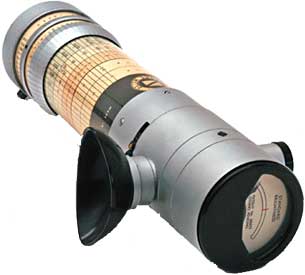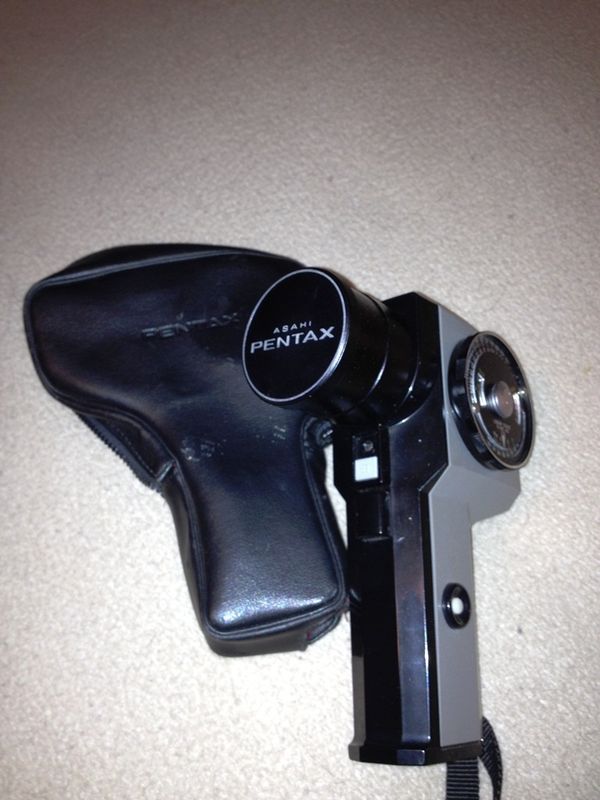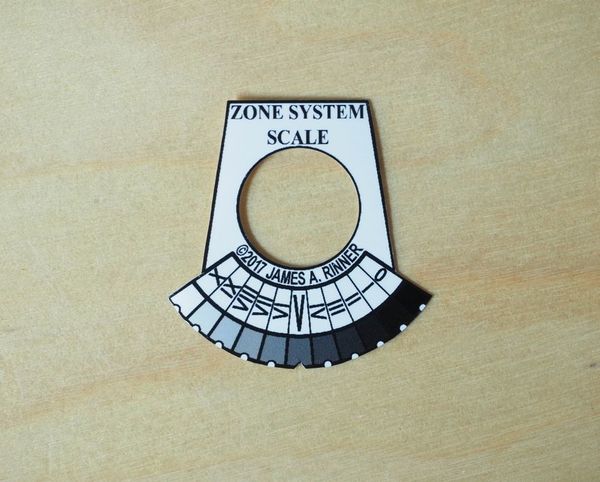The Zone System - How Do YOU Meter For It
Jan 13, 2018 09:32:53 #
I am sure you know that the Zone System, not an Ansel Adams invention, was intended for use with b&w negatives. Indeed it works best with cameras that have only ONE negative like those of large format cameras.
The spot meter with its precise 1-2 degrees angle of acceptance is the ideal exposure meter to use. Metering is done from an important dark area and the lens is closed two stops from the meter reading. The bright areas are taken care of with the development of the negative. Using a densitometer to assess the proper development is the rule although testing the time of development without the densitometer can also yield very good results.
I have not used the Zone System as it was intended with digital. Digital requires careful attention to the highlights because otherwise they get clipped or overexposed easily so with digital the exposure should be made from an important highlight. In the "digital darkroom" editing programs are not developers meaning that once the highlight clips it is very difficult to correct the exposure while opening of the shadow areas is something that we do every day without causing a significant deterioration of the file except for noise at times.
This is the best I can do with an explanation of the Zone System.
The spot meter with its precise 1-2 degrees angle of acceptance is the ideal exposure meter to use. Metering is done from an important dark area and the lens is closed two stops from the meter reading. The bright areas are taken care of with the development of the negative. Using a densitometer to assess the proper development is the rule although testing the time of development without the densitometer can also yield very good results.
I have not used the Zone System as it was intended with digital. Digital requires careful attention to the highlights because otherwise they get clipped or overexposed easily so with digital the exposure should be made from an important highlight. In the "digital darkroom" editing programs are not developers meaning that once the highlight clips it is very difficult to correct the exposure while opening of the shadow areas is something that we do every day without causing a significant deterioration of the file except for noise at times.
This is the best I can do with an explanation of the Zone System.
Jan 13, 2018 09:48:21 #
William, everything you wrote is true. However, to complete TZS, one has to couple the printing paper to the negative development. It's not, necessarily, the film development isolated from the printing paper. The idea is to match the tonal range of the processed negative to that of the tonal range of the paper on which the negative will be printed.
--Bob
--Bob
camerapapi wrote:
I am sure you know that the Zone System, not an An... (show quote)
Jan 13, 2018 09:50:44 #
rmalarz wrote:
I use TZS almost exclusively for large format and ... (show quote)
Sounds good. I've used the Zone system for both Film and Digital Photography. Not all the time mind you. I have a Minolta Spotmeter F and Gossen Luna-Six light meters.
To take full advantage of the Zone System for digital I need to "calibrate" or determine the (native) tonal range of each of my 3 cameras and extend the system to my printing with my Canon PIXMA PRO-9000 printer. Right now even with my usual Photoshop Work Flow with RAW to 16-bit PSD and TIFF files I still have to fuss a lot even when using the Zone System. I would image that each camera is different as they cover a range of years of technology, 2008 - 2013; Pentax K-20D (14MP), K-5 (16MP), K-3 (24MP).
Jan 13, 2018 09:56:22 #
camerapapi wrote:
I am sure you know that the Zone System, not an Ansel Adams invention, was intended for use with b&w negatives. Indeed it works best with cameras that have only ONE negative like those of large format cameras.
Actually, it is my understanding that Adams was instrumental in developing the Zone System. If this is wrong, as you seem to imply, please elucidate. Also, IIRC, B&W negatives were the only game in town when the system was devised.
camerapapi wrote:
The spot meter with its precise 1-2 degrees angle of acceptance is the ideal exposure meter to use. Metering is done from an important dark area and the lens is closed two stops from the meter reading. The bright areas are taken care of with the development of the negative. Using a densitometer to assess the proper development is the rule although testing the time of development without the densitometer can also yield very good results.
Yes, B&W, as well as color negatives require attention to the dark zones.
camerapapi wrote:
I have not used the Zone System as it was intended... (show quote)
Yup, chromes, like digital, require attention to the highlights.
Jan 13, 2018 10:00:07 #
Observe the Histogram for proper exposure and then adjust for the black point and the white point in Photoshop. More than one way to skin a cat.
Shutterbug57 wrote:
This thread assumes a familiarity with the Zone Sy... (show quote)
Jan 13, 2018 10:02:15 #
anotherview wrote:
Observe the Histogram for proper exposure and then adjust for the black point and the white point in Photoshop. More than one way to skin a cat.
How would you do that with a Mamiya 645 or Nikon N90s shooting Tri-X?
Jan 13, 2018 10:03:47 #
Shutterbug57 wrote:
Yup, chromes, like digital, require attention to the highlights.
Ansel Adams and Fred Archer. It is essentially based on the sensitometry studies of Ferdinand Hurter and Vero Charles Driffield. They intensely studied the effect of exposure on tonal range and reproduction. They came up with notion of film and paper characteristic curve also known as the HD curve and how exposure and development influenced this curve.
https://en.wikipedia.org/wiki/Sensitometry
Jan 13, 2018 10:05:12 #
Darkroom317 wrote:
Ansel Adams and Fred Archer. It is essentially based on the sensitometry studies of Ferdinand Hurter and Vero Charles Driffield. They intensely studied the effect of exposure on tonal range and reproduction. They came up with notion of film and paper characteristic curve also known as the HD curve and how exposure and development influenced this curve.
https://en.wikipedia.org/wiki/Sensitometry
https://en.wikipedia.org/wiki/Sensitometry
Cool, thanks. A quote from the link’s link to TZS - “Although it originated with black-and-white sheet film, the Zone System is also applicable to roll film, both black-and-white and color, negative and reversal, and to digital photography.”
Jan 13, 2018 10:40:24 #
In the late 60s, I was fortunate to have the opportunity to learn the zone system from AA directly. As was most of his work at the time, we were using it for b&w negative film. He was using a Pentax spot meter and he used Polaroid Type 55PN film to demonstrate production of a pre- visualized series of images of a blank wall ranging from pure white to total black. With most b&w negative material one stop is equivalent to one step on the grey scale. He took extensive notes and used cut film so that he could customize development to the particular image. He stressed a few major points which I have always kept in mind since. Except when an unusual scene required special interpretation, he attempted to include all ten grey tones in any given image. The areas representing zones I and X could be quite small and still be adequate to keep the image balanced. Well illuminated human skin tones (both white and black) are placed on zone VI in order to produce a natural appearance. When natural looking skin tones were not a consideration, the placement of zone V (the numeric exposure that would be set on the camera) was determined by the pre-visualized image to give a negative that was able to be manipulated to match that pre-visualized image.
My medium of choice was/is black and white negative film. With color film, I used transparencies since presentation to a group was often the objective. Because of the nature of transparency film, I found that the zone system tended to influence my choice of exposure to some extent, but was not particularly useful to me beyond that. While I do, now, have some quality digital equipment, I treat it much like I would have in shooting transparency film. I love darkroom work and the range of interpretation b&w offers, so my medium of choice is still black and white negatives. There was a publication mentioned earlier in this thread written by one of Ansel's former assistants which covers application of the zone system in digital photography. I expect that would be very helpful for those who have made the transition into the current world of digital photography. There are also several other sources offered, each of which I would expect to offer useful insights which can be incorporated into practical application.
Finally, my heritage leans strongly to that of stereotypical New England. The result is that I am very reluctant to abandon the high quality equipment I already have and enjoy using so long as the necessary materials for its use are still available. I have to admit that my grandfather's take on life has, to some extent, lessened my issues with GAS.
My medium of choice was/is black and white negative film. With color film, I used transparencies since presentation to a group was often the objective. Because of the nature of transparency film, I found that the zone system tended to influence my choice of exposure to some extent, but was not particularly useful to me beyond that. While I do, now, have some quality digital equipment, I treat it much like I would have in shooting transparency film. I love darkroom work and the range of interpretation b&w offers, so my medium of choice is still black and white negatives. There was a publication mentioned earlier in this thread written by one of Ansel's former assistants which covers application of the zone system in digital photography. I expect that would be very helpful for those who have made the transition into the current world of digital photography. There are also several other sources offered, each of which I would expect to offer useful insights which can be incorporated into practical application.
Finally, my heritage leans strongly to that of stereotypical New England. The result is that I am very reluctant to abandon the high quality equipment I already have and enjoy using so long as the necessary materials for its use are still available. I have to admit that my grandfather's take on life has, to some extent, lessened my issues with GAS.
Jan 13, 2018 10:40:45 #
Shutterbug57 wrote:
Cool, thanks. A quote from the link’s link to TZS - “Although it originated with black-and-white sheet film, the Zone System is also applicable to roll film, both black-and-white and color, negative and reversal, and to digital photography.”

Jan 13, 2018 11:04:18 #
Shutterbug57 wrote:
Well, if you are shooting 10 stop scene with 8 stop film/sensor, it is nice to know what the upper and lower 2 stop zones are so you can make decisions. The decision may be to go HDR, but there are other options. Without info, such revisions are guesswork.
It is interesting that you mentioned Adams and bracketing in your post. From a BBC interview with Adams in 1983 Adams stated - "Bracketing just shows your insecurity…it means you don't know what you're doing!"
It is interesting that you mentioned Adams and bracketing in your post. From a BBC interview with Adams in 1983 Adams stated - "Bracketing just shows your insecurity…it means you don't know what you're doing!"
That's true of course with film. The other half of the zone system is in the development, ie, push, pull or normal development to compensate for the exposure and contrast. If you have a 10+ stop scene and an 8 stop digital sensor, then bracketing shows that you DO know what you're doing.
Jan 13, 2018 11:27:02 #
Jan 13, 2018 11:36:28 #
LoneRangeFinder wrote:
An excellent guide to using the zone system is âÃÂÃÂThe Practical Zone System for Film And Digital OhotographyâÃÂàby Chris Johnson 4th Ed. Chris Johnson studied with Ansel Adams, Imogene Cunningham, and Wynn Bullock and later served as a Professor of Photography at The California College of the Arts.
The book has a great deal of information on exposure for digital photography using the Zone System.
The book has a great deal of information on exposure for digital photography using the Zone System.
===================
Yes!
Excellent book. easy read, well written, and just about explains everything one needs to know about the "Practical Use" of The Zone System.
By The Way.... Attached are two light meters that I use (have used). The S.E.I. Still works, but I donated to the "International Photography Hall of Fame and Muesum" = Here in Saint Louis, Missouri.
-------------------
-0-
S.E.I. Photometer. (Ansel Used one of these)

Pentax Spot Meter I still use... It has a "Zone Scale" Attached to it.

(Download)
"Stick-On" Zone-Dial -- (Handy buy not needed.)

(Download)
Jan 13, 2018 11:51:44 #
I regret selling my Spot meter. One degree spot was very helpful in fine tuning exposures.
Jan 13, 2018 11:55:06 #
LoneRangeFinder wrote:
I regret selling my Spot meter. One degree spot was very helpful in fine tuning exposures.
=============
I saw a "Used" (of course) - S.E.I. on E-bay for sale a few weeks ago. The one I had was given to me by one of my "mentors" that I worked for in the late 1960's.
-0-
If you want to reply, then register here. Registration is free and your account is created instantly, so you can post right away.








